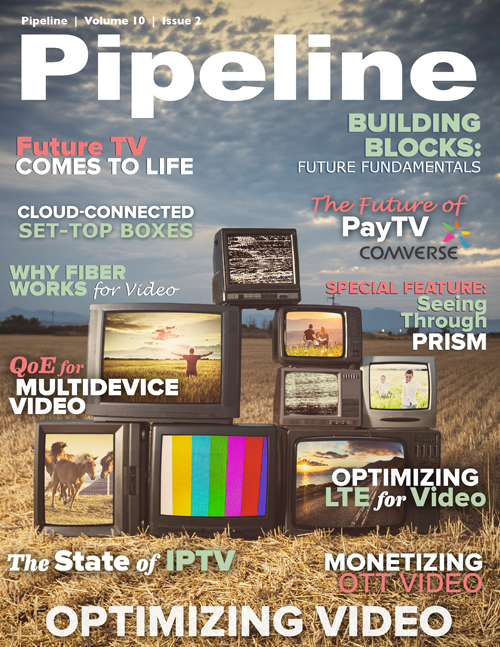Leveraging Video Optimization to Harness the Power of LTE
By: Sekhar Banerjee

Most mobile subscribers who sign up for LTE services are lured by a network that’s faster than their current devices are capable of handling, one that allows them to access high-quality content when they want it, where they want it. Enhanced quality of experience (QoE) is another draw, and LTE provides mobile operators with a low-latency, high-bandwidth network that’s significantly superior to 3G; encouraging LTE subscribers to consume more data than the average 3G customer. Ironically, however, LTE QoE is impacted by the network congestion that often results from this increased consumption of data.
Now is the time to optimize
To reduce congestion-driven problems, mobile operators must accept the fact that intelligent network-optimization solutions play a critical role in running an efficient, first-rate LTE network. Many have already concluded that mobile-video streaming is a major contributor to network traffic, and their findings are verified by the Cisco Visual Networking Index’s Global Mobile Data Traffic Forecast Update, which indicates that mobile video made up 51 percent of all worldwide traffic last year and will constitute nearly two-thirds, or 67 percent, by 2017.
Managing video on their networks is one of the main issues mobile operators need to address if they hope to maintain their current revenue levels while continuing to deliver quality services and valuable subscriber experiences. To underscore this point, Susan Welsh de Grimaldo of Strategy Analytics stated in an RCR Wireless webinar last November that higher consumption of mobile video doesn’t necessarily translate to greater customer spending. In fact, she predicted that as consumption soars, average revenue per user (ARPU) will drop, which is why it’s vital that operators work toward reducing their cost base by addressing the issue of video management with intelligent video optimization.
A faster LTE network means faster, more streamlined access to mobile broadband, because LTE allows operators to transfer more bits of information on the same spectrum. But as mobile subscribers begin to take notice of the speed at which video can be streamed on an LTE network, they’re also realizing they can now access content at much higher resolutions than ever before on their devices, creating a good user experience and the further consumption of data bandwidth and data volume.
Increased LTE streaming leads to an exponential increase in network traffic, adding to network congestion. But the problem that operators really have to manage isn’t the amount of video that’s sent through their networks—it’s the radio access network (RAN) capacity, which is strained by the number and frequency of connections that subscribers have to make in order to retrieve videos on their mobile devices.
To cope, mobile operators must implement congestion-aware video optimization solutions that intelligently analyze subscriber traffic and monitor independent video flows so as to detect “congested flows,” which would then be optimized to provide a better user experience. Optimization solutions can also be deployed in mobile networks that have probes in the radio access network (RAN) infrastructure. The solutions detect and report potential congestion so that operators can preempt it from occurring in the network, thus optimizing the demand on LTE networks and improving response times for subscribers who are attempting to access certain videos.
Deriving optimal value from a holistic optimization solution
Previously, operators engaged with separate vendors for caching, encoding and decoding, pinching and throttling, and service delivery. But due to the evolved nature of today’s networks, operators must consolidate and execute an end-to-end optimization solution from a single vendor for optimal reliability, performance and actionable insights. When operators have a holistic view of the subscriber and the network’s activity, they can efficiently implement a productive solution, but holistic optimization solutions also need to address encoding quality, playback nature and device-specific delivery.
Encoding quality refers to the way in which a video’s original content has been reformatted for mobile delivery, taking into account the size and type of the content and various device capabilities in order to yield the most optimal quality to the mobile device in question and at the least cost to the central processing unit (CPU), therefore ensuring longer battery life. By dispatching mobile video that’s optimized for an operator’s network instead of sending a subscriber the best possible version of a particular video that’s currently available from the content provider, operators become “context aware” and can pair the appropriate video with current network resources to supply the best QoE.
Playback nature refers to the stuttering and buffering that occurs when network download speeds are inadequate and networks are congested. Successful optimization solutions will provide smooth playback by using context-aware and congestion-aware compression to deliver a video stream with the best possible quality that doesn’t lead to stuttering and buffering.



















